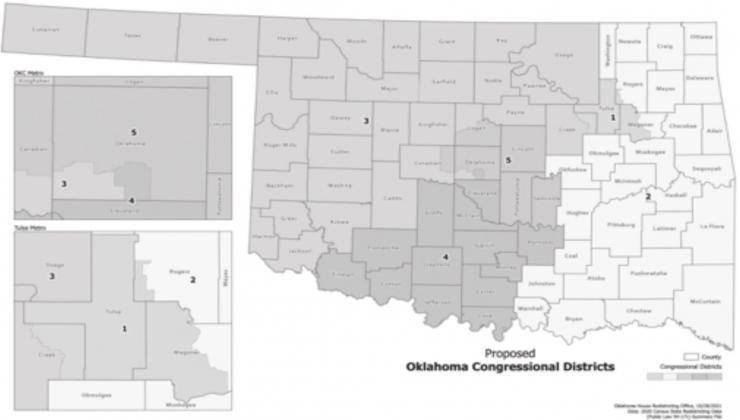Democrats will face greater odds of claiming one of the state's five U.S. House seats if a redistricting plan unveiled last week is approved when lawmakers return for a Nov. 15 special session.
Since Oklahoma’s population grew in the last decade by 200,000 — with much of that 5% growth coming around Oklahoma City and Tulsa — lawmakers must redraw the maps so the five districts have roughly the same amount of people.
Republican leaders claimed last week that their proposal would lead to “little changes.” But data shows it could significantly change the state’s political dynamics for the next decade.
Specifically, the congressional redistricting proposal threatens to make Oklahoma’s 5th District, the only state district that has seen competitive races since 2012, a more difficult target for Democrats.
Democrat Kendra Horn broke a long-running GOP winning streak in the district in 2018 when she defeated incumbent Steve Russell with 50.7% of the vote. Stephanie Bice retook the seat for the GOP in 2020 when she beat Horn with 52.1% of the vote.
With Democrats holding a 220-to-212 member advantage in the U.S. House of Representatives, the race holds importance beyond the state’s borders. Last election cycle, the Hill named the 5th District one of “10 bellwether House races to watch.”
Under the GOP-led Legislature’s plan, the 5th District, which currently covers most of Oklahoma County and all of Pottawatomie and Seminole counties, would be extended to include all of Lincoln County plus the southern portion of Logan County and an eastern portion of Canadian County.
Oklahoma City, most of which is currently in the 5th District, would be split into three congressional districts. The 3rd District, which covers much of the western part of the state including the Panhandle, would absorb much of the city’s southwest side, a heavily Hispanic area that has been a Democrat stronghold. And the 4th Congressional District would continue to cover part of southeast Oklahoma City, including Tinker Air Force Base.
Currently, Republicans hold an advantage in the 5th District in a partisan lean score developed by Dave’s Redistricting App, a program the state partnered with to allow users to submit maps to the Legislature, with 52.4% of the district leaning Republican. The proposal unveiled last week would increase that lean score to 58%.
Republican lawmakers said last week that they did not consider the partisan makeup of the five districts as part of their decision-making process since it wasn’t part of their official guidelines.
But, as part of this story I wrote last month, Michael Crespin, director of the University of Oklahoma’s Carl Albert Congressional Research and Studies Center, told me politics are never far from the mapmakers’ minds.
“The drawing of the map is always very political,” he said. “Except in a few instances where they just use population, the maps are drawn more to get a political outcome more than anything.”
Democrats also have claimed that Republicans are using their power to gerrymander the maps to protect their own interests.
“It is clear from the proposed map released (Monday), the goal was to draw gerrymandered congressional districts to protect incumbents from competitive elections,” said Senate Democratic Leader Kay Floyd, D-Oklahoma City.
With Republicans carrying overwhelming majorities in the House and Senate, there is little Democrats on their own can do. But that doesn’t mean the plan is set in stone


